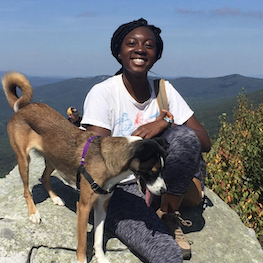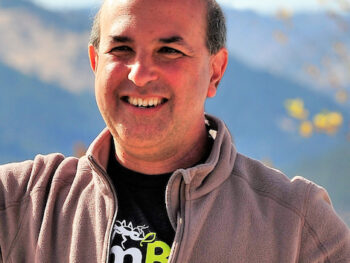Science is becoming more collaborative over time, and one trend in science education is to try and reflect that cultural change in the classroom. An essay in a recent issue of Nature (March 25, 2010) got me thinking about how the culture of scientific collaboration is not uniform, and what that means for our choice in the classroom.
At SimBiotic, we often tell people that students will learn the most from our virtual biology labs if they work in teams of two or three. We then qualify that by saying each student should fill out their own workbook, so the students learn collaboratively, but also individually. Two to three students feels like an optimal number to work together in front of a computer, and I believe there is some research to back that up. It’s also a familiar size for collaborations in much of biology. For instance, I worked closely with two other grad students on parts of my Ph.D thesis, and then with one technician, and have collaborated with similar size teams on many other projects. I’ve also been on research teams which reached the next order of magnitude, involving a half dozen to a dozen researchers (including the teams at SimBiotic that produce our interactive biology chapters). Aside from a few special projects like genome sequencing, that’s about as large as it gets in biology.
The Nature article, though, discusses collaborations in a completely different universe at the CERN physics laboratory in Geneva. The latest experiment at CERN, the Large Hadron Collider, is a collaboration between 10,000 ( ! ) physicists, broken into teams that can each be hundreds or thousands of scientists strong. This has attracted anthropologists studying the physicists to see how they interact, and what kind of culture develops that allows them to build such a complex machine. Perhaps not surprisingly, the culture is different. Where in biology, authorship of publications is the way people distinguish themselves, and is thus a major flashpoint that generates friction between researchers, at CERN, all authorship is done strictly alphabetically. Moreover, since the machine is so complex, no one person or small group can do the design on their own. Instead, different teams propose designs, and compete to have their design win out. But even the competition is done collaboratively, so in the end everyone comes to a consensus about which design is best. The anthropologists describe CERN as akin to a commune.
While increasingly rare, there are also still areas of science (mathematics, for instance, or even the occasional biological studies) where individual investigators go off, think hard, do some experiments, and come back to the world with their results. Between those studies and CERN is a wide range of scales of collaboration, and apparently a wide range of cultures to go along with them. Which brings me back to the biology classroom. There are also many experimental classes these days with different levels and cultures of collaboration between students. There’s some data on which types of collaborations seem effective for increasing student learning, and I find those really interesting. But now I’m wondering about one step further. Does the type of collaboration you experience as a student predispose you to fit, or to choose, certain cultures of science?







